Home | FOOD ARTICLES | Food Trivia | Today_in_Food_History | Food_History_Timeline | Recipes | Cooking_Tips | Food_Videos | Food_Quotes | Who’s_Who | Culinary_Schools_&_Tours | Food_Trivia_Quizzes | Food_Poems | Free_Magazines | Food_Festivals_and_Events
Food Articles, News & Features Section
FREE Magazines
and other Publications
Free Professional and Technical Research, White Papers, Case Studies, Magazines, and eBooks
VANILLA FIELD REPORT
See also: Vanilla 1;
Vanilla Trivia
Spice Buyer’s Journal: Madagascar
Vanilla, with its absolutely unmistakable aroma and taste, is one of the most popular flavors in the world. For centuries, people have treasured this venerable bean, though few realize the care involved in creating its distinctive flavor. From pollination to harvest, sun drying to curing, vanilla is cultivated today – as it was centuries ago – entirely by hand.
During the past few years, the world has experienced a significant vanilla shortage. However, now vanilla is plentiful, and people can once again relish its classic flavor. My name is Al Goetze, and I’m the chief spice buyer at McCormick & Company, Inc. In this installment of the Spice Buyer’s Journal, I’m giving you an inside look at my recent trip to Madagascar, the primary growing area for Vanilla planifolia, the most popular species of vanilla.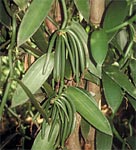 It is essential that I take a first-hand look at the crop each year. I travel to the island of Madagascar – off the Southeast coast of Africa – home of the “golden triangle” of vanilla production, which represents more than 60 percent of the world’s supply. This golden triangle is a mountainous area on the Northeast coast, in and around the small towns of Antalaha, Sambava, and Andapa.
It is essential that I take a first-hand look at the crop each year. I travel to the island of Madagascar – off the Southeast coast of Africa – home of the “golden triangle” of vanilla production, which represents more than 60 percent of the world’s supply. This golden triangle is a mountainous area on the Northeast coast, in and around the small towns of Antalaha, Sambava, and Andapa.
February is an opportune time to make the long trek to Madagascar to inspect the newly cured beans from last year and get a snapshot of the new, green beans that will be harvested in July.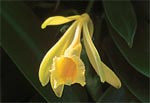 Traveling in Madagascar, like many developing countries, is by no means easy. Air travel is limited and the roads are poorly maintained; however, when we finally reach the farming areas, it is very much worth the effort. The breathtaking beauty of the landscape (the majestic sea, the narrow, bountiful plains, and the nearby colorful tree-covered mountains), along with the remote edge-of-the-earth feeling is almost overwhelming.
Traveling in Madagascar, like many developing countries, is by no means easy. Air travel is limited and the roads are poorly maintained; however, when we finally reach the farming areas, it is very much worth the effort. The breathtaking beauty of the landscape (the majestic sea, the narrow, bountiful plains, and the nearby colorful tree-covered mountains), along with the remote edge-of-the-earth feeling is almost overwhelming.
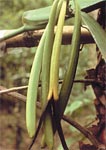
While there, I feel like I am living in a time long past. The multitude of small farmers meticulously care for their vanilla gardens, then sell their beans to collectors, who work from old, French colonial-style compounds. Even the shipments of vanilla are deliberate and slow. A small vessel infrequently arrives at a tiny loading ramp to transport goods to a larger, Southern port. Pirating of shipments is not uncommon in this region. Today, all of our water shipments travel with armed guards on-board.
Vanilla is a vine that is a member of the orchid family. It is the only orchid to bear an edible fruit. Vanilla is indigenous to tropical Mexico and Latin America. The first historical reference to this beloved flavor can be traced back to Mexico in 1520. The Spanish explorer, Cortez, was introduced to a drink made of cocoa, honey and vanilla, by the Aztecs, during his exploration of the country. Over time, cuttings of vanilla were brought to other tropical growing regions, particularly in the Indian Ocean locales of Madagascar, Réunion and Comoros. Vanilla from this part of the world is called Bourbon Vanilla, named for the French Bourbon Kings who ruled the region in the 1800s. Today, the major growers of vanilla are Madagascar, Indonesia, Comoros, Uganda, and Papua New Guinea.
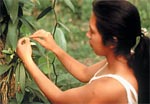
The vanilla vine requires a small live tree for support and light shade. The plant is propagated from cuttings from an existing vine. Young plants require three years to mature before they are ready to produce beans of any quantity.
Once a vine is mature, and prior to the onset of the monsoon period, it grows a fruit-bearing runner that usually has three or four brackets that develop individual f lowers - a few per day per vine - in the early morning. It is critical that farmers hand-pollinate each flower on the morning it appears, as the flowers wilt and fall off that same afternoon. Nature originally intended for a special, tiny bee – called the Melipone Bee – in Central America and Mexico to do this job. However, when vanilla was exported to other growing countries, no local insect inherited this important task! This was a big problem for several hundred years. Early farmers propagated vines in different tropical regions of the world, but no vanilla beans developed. Finally, a Belgian botanist discovered the pollination deficiency in the early 1800s, and the hand-pollination process was born. Once a flower is pollinated, it takes seven to nine months for a bean to develop and reach full maturity.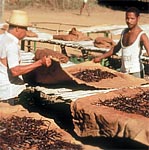 Equally important as proper growing of vanilla beans is how they are cured to bring out their full flavor. Curing is a manual process that began in the early 1900s. The mature green beans are picked and, within a short period of time, placed in boiling water for three minutes to arrest growth. Then, they are sweated in burlap-wrapped piles or wooden boxes for three days, which continues the curing process. After that, the beans are sun dried for two to three months, during which time the farmers bring the beans outside each morning and spread them on pieces of burlap to soak up the sun’s direct rays. Each afternoon, the beans are wrapped and returned inside for the night. The final stage is allowing the beans to further cure in wax-lined wooden boxes, which brings out their full flavor. The end result is a rich, dark brown, moist, and pliable bean that is loaded with aroma and flavor.
Equally important as proper growing of vanilla beans is how they are cured to bring out their full flavor. Curing is a manual process that began in the early 1900s. The mature green beans are picked and, within a short period of time, placed in boiling water for three minutes to arrest growth. Then, they are sweated in burlap-wrapped piles or wooden boxes for three days, which continues the curing process. After that, the beans are sun dried for two to three months, during which time the farmers bring the beans outside each morning and spread them on pieces of burlap to soak up the sun’s direct rays. Each afternoon, the beans are wrapped and returned inside for the night. The final stage is allowing the beans to further cure in wax-lined wooden boxes, which brings out their full flavor. The end result is a rich, dark brown, moist, and pliable bean that is loaded with aroma and flavor.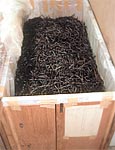 On this trip, I learn that last year’s abundant crop is almost fully cured, and its quality much improved over the previous two years. During that time, crops were so small that farmers were forced to pick beans before they reached maturity to avoid them being stolen. These conditions, coupled with the past years’ storms (including cyclone damage and poor weather at flowering time), resulted in poor quality beans. I’m happy to share that there is now plenty of vanilla available.
On this trip, I learn that last year’s abundant crop is almost fully cured, and its quality much improved over the previous two years. During that time, crops were so small that farmers were forced to pick beans before they reached maturity to avoid them being stolen. These conditions, coupled with the past years’ storms (including cyclone damage and poor weather at flowering time), resulted in poor quality beans. I’m happy to share that there is now plenty of vanilla available.
About McCormick
McCormick was founded in 1889 in Baltimore, Md. Today it is the largest spice company in the world. McCormick sources only the finest ingredients from around the globe to bring the highest quality flavors to consumers. For more information, visit McCormick online at www.mccormick.com, or call 1-800-MEAL-TIP (1-800-632-5847).
RELATED ARTICLES
Please feel free to link to any pages of FoodReference.com from your website.
For permission to use any of this content please E-mail: james@foodreference.com
All contents are copyright © 1990 - 2025 James T. Ehler and www.FoodReference.com unless otherwise noted. All rights reserved.
You may copy and use portions of this website for non-commercial, personal use only.
Any other use of these materials without prior written authorization is not very nice and violates the copyright.
Please take the time to request permission.

